|
Directions (or process or methods)
I often do this in my class with my students on those days when we are talking about cultural appropriation, cultural representation, No Doubt music videos and whatever else has come up within the last few months that has to do with some person dressing up as a Native female and portraying her as: overly sexualized, easy on the eyes, overly - feathered, underly-feathered, entirely there for the viewing pleasure of somebody else, as a woman who likes the earth, as a woman who likes to dress up and dance around while being overly sexualized, as something "super cute" and "super cool" to imitate by wearing something entirely overly sexualized. I will usually ask "but who cares right? I mean it's just one person doing something dumb, it's not like it affects the way we see Native women. It's not like it is the only way that people see Native women." And then I will say "alright, let's see, in a totally not scientifically designed, nor institutionally reviewed way, what happens when you Google Native American Women." And this is what happens: Before we get started I would like you to look at this screen shot from my computer and pick the photo that makes you stop and stare for a moment. Which of these photos, for you, makes the quickest impression. Which one makes you stop? After you've done that... make a mental note and continue reading. At the end of this thing *spoiler alert* I will tell you the image that ends up being the one that most of my captive audiences make note of. Hokay -- In which I lead a presentation on what happens when you Google "Native American Women" and critically analyze the images or "Hupas be like dang where'd you get that dentalium cape girl? Showing off all your money! PS suck it Victorias Secret."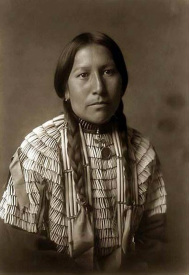 I will usually start with this question -- "What Do You Notice About The First Image?" Paraphrased Answer -- Native American Women are stoic and have long hair and are in black and white. Actually it's called "sepia." No this is not an Instagram filter. I will usually begin with this image because it is the first image. As I learned from the Sound Of Music (Julie Andrews' Sound of Music and not whatever that was on NBC a few months back) - we should start at the very beginning, a very good place to start... So this image is an Edward Curtis image. That's important. (At least to me it is; that nugget of info might not be important to everyone). Interestingly enough, when you Google Native American, or American Indian, or Native American Indian you will probably come up with Edward Curtis images. Lots of them. 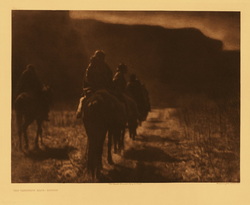 And you will most likely, at some point, come up with this one -------> That's Curtis's "Vanishing Race" photo and it became a signature piece, a piece that defined his point of view, a piece that people associated with the impetus and also meaning of his work. In Curtis's mind there were Native people in America and they were vanishing, literally riding off into the sunset, and Curtis was going to take pictures of them so that his photos would become the last documentation of this once great people. (Except that didn't happen, and Native people are still alive, and they are not all riding off into the sunset. In fact, I can't ride a horse. Shhh... don't tell. I would fail that Indian test.) But for many people these photos DID become the way that they saw and understood Native people: stuck at a certain period of time, looking a certain way, never smiling, always in the old West. These photos weren't always the bees knees, however. There's a super interesting story that happened where Curtis basically died penniless, alone and without the fame that he was chasing. Also interesting, they found his photos in a basement because nobody had really cared about them until they were "rediscovered" in the early 1970s. It's easy to find the dude supremely annoying. At least I did at first. He was just another white guy convinced that all Native people were on their way "into the past" and that he would be the one to capture their greatness before they disappeared. This is a common thought by a lot of white dudes in history, anthropology, archaeology, and photography among other disciplines. Could you imagine someone coming up to you and saying "I want to take a picture of you and your family because all of you are going to die soon. Okay thanks, bye." I would probably stop and be like "Wait a minute, we're going to die soon? Is there something we can do about this? I'd rather not just die. Are you here just to watch me die? Shouldn't we be talking about how you have this information and I do not? Shouldn't we maybe be trying to help me and my family not die?" And Edward Curtis would have said (maybe, I'm basically putting words in his mouth) "Oh sweet dear, it can't be stopped. Progress and all. Say cheese!" In the end, Curtis's photos were a way for him to solidify the death of Native people by taking their last pictures for posterity. This was exciting to a lot of people because deep down they wanted Native people to be dying. They really wanted them to just disappear. It would solve "the Indian problem" (that's the problem where Native people are still alive and the treaties still count and it's like "hey, can't you just go away so we don't actually have to be beholden to agreements that we made saying we would always be beholden to them? J/K about those treaties and stuff."), it would also make it a lot easier to claim that the United States (or the colonial government) is the "rightful" owner of the land, because nobody else owns it, they are all dead. This is the trope and belief system that Edward Curtis photos were supposed to contribute to. But instead, he captured many hundreds if not thousands of people who were carrying on in their lives despite what (at that time and continues to be) had been many, many attempts to annihilate, kill or assimilate every single one of them. So it's a fascinating story of survival, revitalization, survivance, resistance, strength and the power of culture. It's not a story about Edward Curtis in the end, although (to be fair) Curtis goes through what I see as a pretty fantastic transformation. He stops talking about the "inevitable death" of this group of people and instead starts writing about how the previous and continued policies of the federal government are causing the decline of these people and it is disgraceful. Edward Curtis's photos are everywhere and he had a certain style. He wanted his Indians to be stoic and looking longingly into the distance, almost like they were trying to see the future that they would not be a part of. He didn't want smiling, laughing, modern clothes wearing Native peoples in his photos. He was known to make people change clothes, get rid of any evidence of modern life, use the same shirt that he had picked up for whatever tribe he was photographing to make them look "more Indian." He picked certain lighting, certain ways of sitting, certain profiles because he thought they conveyed seriousness. To him, Natives were serious people, serious, dignified, kind of sad, a little staid, always sepia toned. His women were no different. Curtis is still the first photo that is going to pop up when you Google Native American Women. Consider that. What does it mean that of the main images that appear in Google Images, Edward Curtis's photo is the first to define Native American women? His viewpoint instantly becomes the one that people know the most. And make no mistake, his message lingers. So when I do this exercise I usually ask this question: "And what do you notice about the woman in this first photo? The way she dresses? The expression on her face? How she sits?" Some comments: "She is very serious." "She seems kind of stiff." "She's not wearing a feather in her hair." "She is very covered up and is wearing a lot of, are those shells? Well, she's pretty covered up." That will become important later. 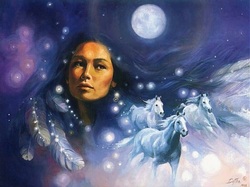 Question-- "Now, tell me what you notice about the 2nd Image" Answer -- Native American Women are beautiful beings who wear feathers and are spiritual and they live in the skies and everything is beautiful. Actually they are. So there you go. Let's move on to the next image. 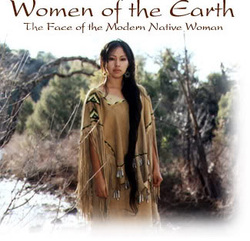 Oh wait, here she is again. The beautiful woman of the earth. I usually like to point out one thing especially about this photo - the title. "Women of the Earth: The Face of the Modern Native Woman." And then we talk about what this means. I don't want to speak for her. In truth, I don't know the back story of this photo. There is something nice about calling her a "modern" Native American woman who is also wearing her traditional regalia. This shows that Native people did not just fade on in to society and they no longer have these pieces to wear in "modern times." Maybe it's kind of nice that she has her regalia and she is wearing it and she is modern. However, it also is tied to a number of stereotypes and assumptions about Native women that need to be critically analyzed. There are reasons that Native Women, their image and ideas about them are so intimately tied to the land or the earth. Part of this could be an epistemological belief from their respective tribes. This could be because of historical ideas across cultures and nations about the earth. This could be because of settler colonialism. I like to blame Columbus, because who doesn't like to do that? The fact is that Native women are associated in many people's minds with being beautiful, mystical, women of the Earth - almost magical - almost. And when you are talking about settler colonialism, this also meant - Native Women were really just there for the settling, through whatever means necessary. If your body is just like the land, then your body needs to be conquered. After that your body can be vaulted to magical, mystical status, tied intimately to the earth - and yet always objectified (as many of us continue to do to the earth, as well). Q -- "What else stands out about these Native American Women in these pictures?" A -- Well, the old ones seem kind of unhappy. And, of course, sepia toned. Native American Women, BTdubbs, are not generally unhappy. Some of them are very happy. Some of them are hilariously happy. Some of them are not happy sometimes. But look at a lot of pictures of Native people in general and you probably won't find a lot of them laughing away at an inappropriate joke while at The Olive Garden (that happens a lot though, to some Native people, like me, the other day). Now ask yourself why, why does the "stoic" image of Native people persist? Why so many sepia pictures of Native people not smiling? It was Vine Deloria, Jr. who said It has always been a great disappointment to Indian people that the humorous side of Indian life has not been mentioned by professed experts on Indian Affairs. Rather the image of the granite-faced grunting redskin has been perpetuated by American mythology. The thing about it is, Native people are hilarious. Also, we laugh really, really loud. Of my many Native women friends (yes, many, I'm so popular!) when we get together all we do is laugh and laugh. But this stereotype and belief not only continues, it also becomes what people expect from Native people. And it becomes what Native people joke about. Stop smiling in the pictures, practice your stoic face. My stoic face looks like a little girl trying to tell her Dad it is not fair that she has to go to bed early. I would not have been asked to pose in Edward Curtis's pictures. 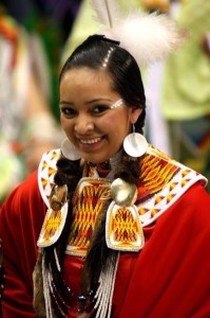 Q -- Is this photo different from the others? A -- "You know that one seems happy." "She seems more real." "She seems more like a real person." "I think she looks really proud." Wouldn't you be? That's some pretty awesome regalia. PS. If you know who this woman is, please email me. I would like to know. She's very popular on Google. *UPDATE* Ask and you will receive! From an email sent to me: Hello! Great read about Native American Women. You asked if anyone knew who the woman is in the picture with the red regalia. Her name is Leela Abrahamson.  Q -- "Is that Megan Fox?" A -- I think I heard she was Native somewhere, you know, back when people were all in to Megan Fox. I'm still totes in to Megan Fox. We could be friends. I would constantly ask her questions about what it is like to be married to David Silver and if she makes copious amounts of 90210 references over dinner or if she owns a "Donna Martin Graduates" t-shirt. Wikipedia says that Megan Fox is Native American: She has English, and smaller amounts of Scottish, German, French, Scots-Irish (Northern Irish), and Powhatan Native American, ancestry This website that I just found says that she is possibly 1/256th Powhatan Native American. That's quite specific. They must have a BIA blood quantum chart on hand. But this website - courtesy of something called askmen.com is offensive, sad, degrading and also infuriating. As far as confirming whether or not Megan Fox is a Native person, it doesn't. But it does say this: Megan Fox doesn’t really look like all the other girls — she looks better than them. Claiming French, Irish and Cherokee ancestry, Megan Fox was born in Tennessee, where the Cherokee had lived for generations before anyone called it Tennessee. Today, the Cherokee Nation represents one of the country’s largest Native American populations — a tale of survival from which Megan Fox may one day need to draw inspiration, since she is as sizzling as can be right now and will need all the help she can get to stay that way. I'm sorry what? When I read this to people during my presentation they just look at me funny. And then I say -- "Yep, this is how websites that purport to be 'a men's online magazine' talk about Native Women." Native Women are beautiful, good thing too cause that will help them later when there is some other little girl trying to be beautiful and they can draw from the years of genocide to fight their way back to the top of the beauty pyramid. This persistent stereotype that Native Women are so beautiful comes from a long line of colonial conquests of lands. It has to do with what Edward Said (oooo super philosopher) called Orientalism and what I call "butt-head-ism." It has to do with travelers tales of far off lands, and the process of exploration which included sending a bunch of degenerate lonely men on a boat for months at a time where they landed somewhere and saw some women (who they usually thought of as closer to animals than anything) and thought "these women must be totally here for me to conquer, like I conquer the land, because they are so different from our women." They also weren't wearing shirts. This, according to these degenerate sailors, made them cuter. And closer to animals. It also has to do with Columbus, who wrote that the women of his newly "discovered" land were the most beautiful he had ever seen. They were so beautiful, he believed, they were essentially inviting him (and all of his degenerate man sailors) to rape, debase, degrade and mistreat them. That's what their beauty did. So it's really their fault. And after that the tales of far off lands included claims that the Indigenous men were savage beasts and the women were beautiful and just waiting to be ravaged and owned. Much like the land was waiting for the same purposes. So instead of talking about how awesome it was that Native women were leaders of their communities, that they were doctors, botonists, geographers, guides, linguists, storytellers, philosophers, diplomats, singers, dancers etc., we get "aren't Native women supposed to be like really beautiful? That must be why Megan Fox is so beautiful." Maybe. It might also explain why she's crafty enough to catch herself a David Silver too. Q -- "Uh no. Just no. Nuh-huh. No. Nope. No. Just... no." (That's not actually what I say when I'm doing this presentation by the way, but it's all I can muster at this very moment) A -- What I notice about this picture is feathers. Feathers. Lots of feathers. Is that a leopard print bikini? At least she's wearing a bikini. They just look kind of dumb. Ahhh... the headdress and the model. I feel like there is a bedtime story, tall tale fable in there somewhere. You see my darling child, long ago, they would sometimes dress up models as Native people by putting large headdresses on them and making them walk runways. "But why Papa?" We don't know why. It really made no sense. We couldn't possibly know why this seemed like a good idea. But there was something fascinating to these people about dressing up models like Indian peoples. Not the covered up, stoic, sepia toned Native peoples. Not the modern day, smiling, cool dance regalia Native peoples. But the kind that seems to say "hey, pretend I got captured by a Native American chief and he like totes let me wear his headdress and then I like totes became like an Indian princess and then like got all into the tribe and stuff but then they came and said 'Hey all you Native Americans have to walk thousands of miles in the snow and probably die because we feel like moving you to a new place cause we want your land now.' And then I was all, oh my gawd, kidding. I'm not REALLY a Native Princess. I was just playing an Indian for fun, cause it's fun until you try to kill me for being Native. Look if I take off this headdress, I'm just back to me, and I don't even have to walk that far and stuff." *The End* Dressing up like an Indian means that eventually one (the model, the people at a festival, the actress on the cover of a magazine) can take off that costume and just go back to living in a world where they don't have to put up with institutionalized racism, challenges to identity, challenges to your very existence, continued violence against your land, your body, your community. "Playing Indian" is a living testament to --- white privilege. Also, leopard print underwear? Really Victoria's Secret?  Q: "Okay, let's talk about this picture really quick" A: Oh, that's Pocahontas. No, it's not. This is Pocahontas. I just asked my daughter what she thought of this picture (she's 6) and she said "Her dress is short but I like her necklace." "What do you think of her hair?" "It's okay. Your hair is better." And this concludes "Why my daughter gets to stay up late tonight and eat candy before bed time with Cutcha Risling Baldy." 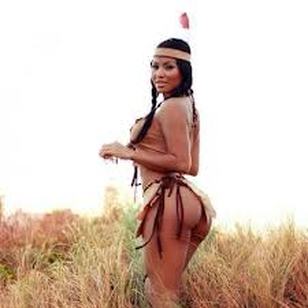 And now to reveal the picture that most people say is the one they stopped and noticed first. *TA DA* -- did you? Q-- What about the first image? Or the other images by Edward Curtis? How did they dress? A-- They were very covered up. They were covered mostly. Q-- What about the image of the girl smiling in her regalia. How was she dressed? A-- She was very covered up but she had beautiful bead work. She was smiling. She seemed very happy. Q -- So who is not covered up? In these pictures? A -- Pocahontas. Victorias Secret Models dressed up like Indian women. Other models in costumes. And this girl. Here are some things I don't know about her. I don't know if she is actually a Native person. I don't know where she is from. I don't know what she is advertising. I don't know why she is walking through a field wearing a headband and a feather and I don't know who she is looking at. But let's talk a little about her. I usually say: Somebody tell me her story. What's happening in this photo? "She's walking thorough a field." "Good." And what else? Is she scared? Is she running from a serial killer? Is she going to Grandma's house?" "No." "What is she doing?" "It's almost like she is inviting you, like whoever is looking at the picture, to come and like get her." "Alright. She's got this come hither look about her. And what else? She wants you come and get her so she can teach you about how Native American women were central to many Native societies in politics and culture and how they helped to shape democracy?" "No. Like she is saying she wants to have sex with you." And there you go. Here is my major problem with this photo. This photo, this messed up fantasy that takes the "Native women want me" colonial, conquest ideology and puts it in picture form -- this photo which portrays Native women as being practically naked, sexualized, walking through a field, open for whatever, this photo which lets you know she is a Native woman that wants whatever you are going to do to her, this photo that is pure fiction -- it comes up more than once in the "Native American Women" section of Google Images. And you know what else comes up: And this leads me to the part where I point out this photo. Included as part of the Google images search it is a poignant reminder of the many reasons why these types of images... matter. That's right. Maybe our "popularized" images, the ones that we are inundated with, maybe they don't just reflect how we think, they influence how we think. And if we are not taught other things about Native women (like say in school, or on television programs, or in movies...) then these images are what we know. This whole exercise... it's only a start. This is just a place to to start to have this conversation. How can we learn from the images that are all around us? And how can we start to expect, demand and make other images become what are the popular images of all women. How can we teach people to be critical of these images? How do we change our Google Image results? Because don't get me started on what happens when you Google Image: Asian Women... Black Women... Or just... women... I can't be the only person who was all "Meg Ryan? That's cool. Whatever happened to Meg Ryan?"
Also -- The gal on the second row at the very end with the tan jacket on. That's Viktorija Čmilytė. I looked her up on Wikipedia because she comes up so high on this Google Images search. She is the Lithuanian chess player with the titles Woman Grandmaster (WGM) and Grandmaster (GM). She won the gold medal at the Women's European Individual Chess Championship in 2011. That's awesome. (There's hope for you yet... Google Images.)
12 Comments
1/25/2014 02:06:16 am
This is very good. I have a section in my Intro to Indigenous Studies class about stereotypes and have a collection of "Indian Maiden Art" pictures. I have a few of the ones you post here as well as old tins of half nude Native women riding bison, the "totem pole dress," etc. btw, the one on the very top row, third from right is Mary Kim Titla. I have the magazine (it's about 20? years old) that has that painting in it. "Native Beauty," I think it was called. As I recall, the artist thought the model "too beautiful" and toned her down in the painting. Can I link to this page so students can read it? Thanks
Reply
1/25/2014 03:11:31 am
I believe the reason the Curtis portraits were of non-smiling people is that the subject had to stay extremely still long enough to catch enough light. All pictures taken by everyone during this period showed non-smiling people.
Reply
Kathleen Hansen
1/26/2014 01:02:12 pm
That was earlier technology
Reply
Mary
1/26/2014 11:45:20 am
What happens when you google "white women"?
Reply
Justice McPherson
1/27/2014 01:06:12 am
Very good. I will, however, make a minor other point, possibly counter, possibly simply as an addendum.
Reply
K
1/28/2014 04:38:02 am
Google men
Reply
C
3/30/2014 02:27:41 pm
Good article and well articulated. But like K said, google men and you could perform the exact same exercise.
Reply
Cathleen Cahill
2/15/2014 07:38:25 am
Such a great exercise -- I'm going to use it in class. Thanks!
Reply
Interesting article! My latest project as a composer involved traveling to another part of the world and recording the sounds there, and using the sounds, including some folk and religious music, to compose a sample-based album. I feel like I have a deep and intimate connection with that part of the world, but I get the feeling that this discussion about cultural appropriation would judge me for being inauthentic and for pillaging the culture. Personally, I feel that the culture stands for itself, that my work is my way of connecting musically with it, and that although I have no blood roots in the culture, it is a way of building bridges.
Reply
D Vance
4/12/2016 05:10:20 pm
Many thanks for this article. Beautifully written and I learned a lot.
Reply
Natalie Mazza
4/10/2017 07:57:23 am
If only there were a way to remove all the false information from the Internet and provide the world with REAL truths about our own history.
Reply
Ariun Enkhbayar
4/10/2017 09:00:58 pm
Thank you for the insightful article!
Reply
Your comment will be posted after it is approved.
Leave a Reply. |
SubscribeClick to
AuthorCutcha Risling Baldy is an Associate Professor and Department Chair of Native American Studies at Humboldt State University. She received her PhD in Native American Studies from the University of California, Davis. She is also a writer, mother, volunteer Executive Director for the Native Women's Collective and is currently re-watching My Name is Earl... (5) Top PostsOn telling Native people to just "get over it" or why I teach about the Walking Dead in my Native Studies classes... *Spoiler Alert!*
Hokay -- In which I lead a presentation on what happens when you Google "Native American Women" and critically analyze the images or "Hupas be like dang where'd you get that dentalium cape girl? Showing off all your money! PS: Suck it Victorias Secret"
In which we establish that there was a genocide against Native Americans, yes there was, it was genocide, yes or this is why I teach Native Studies part 3 million
5 Reasons I Wear "Indian" Jewelry or Hupas...we been bling-blingin' since Year 1
Pope Francis decides to make Father Junipero Serra a saint or In Which I Tell Pope Francis he needs to take a Native Studies class like stat
I need to read more Native blogs!A few that I read...
Archives
June 2020
Categories
All
|
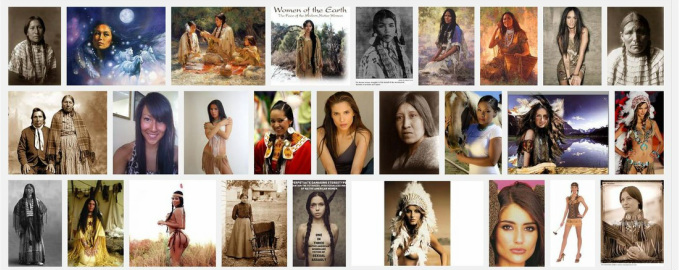
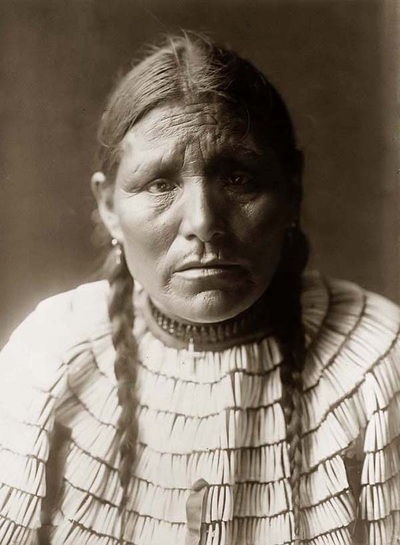
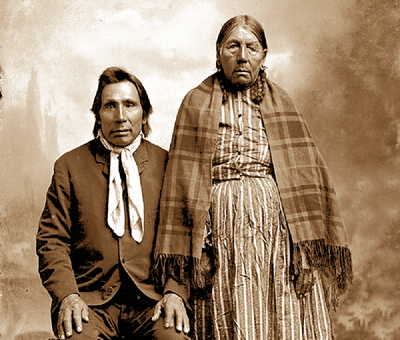
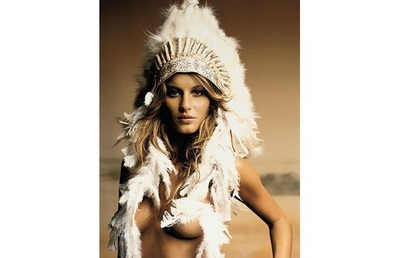
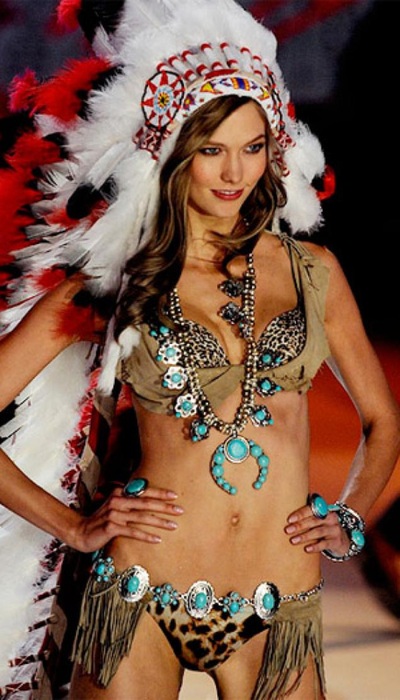
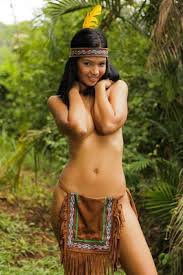
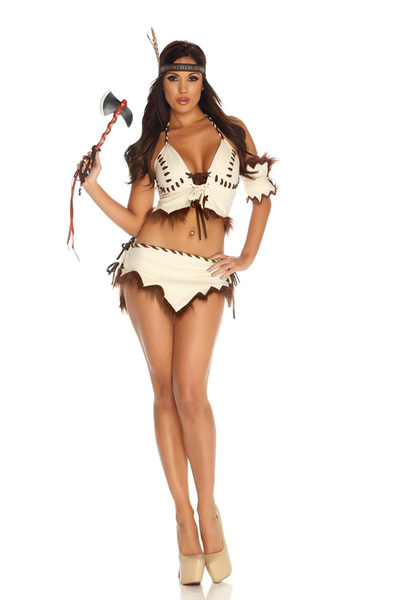
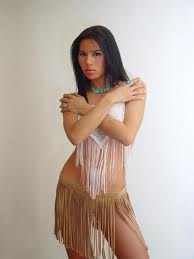
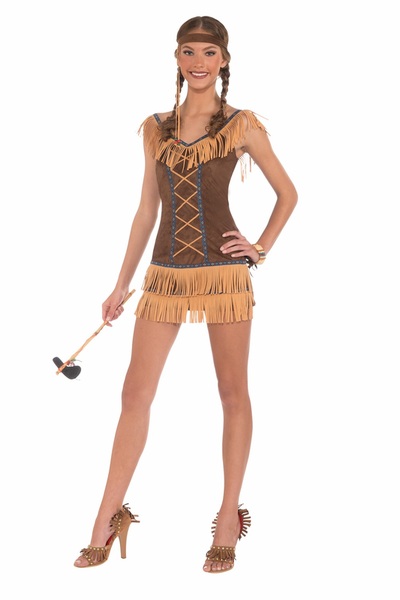
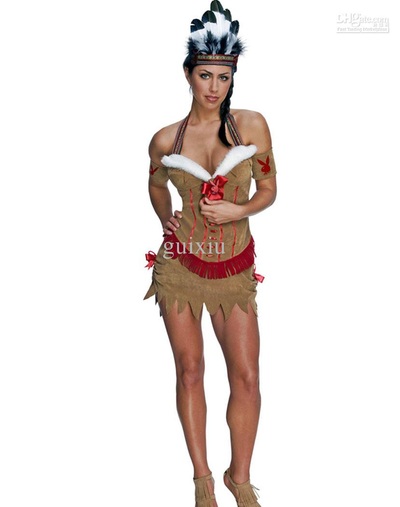
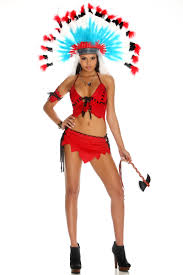
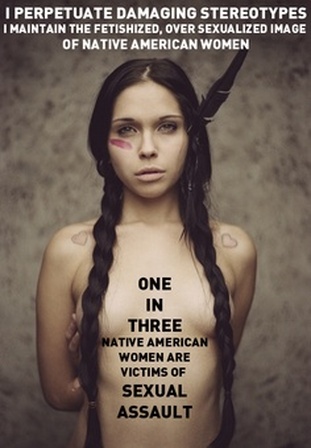
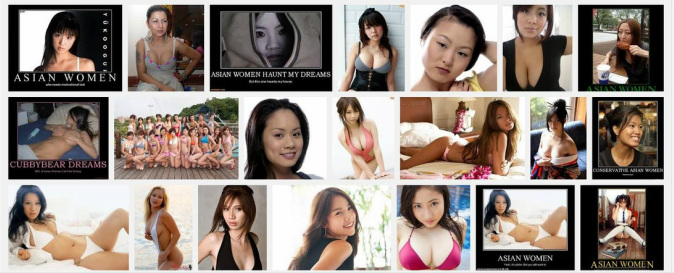
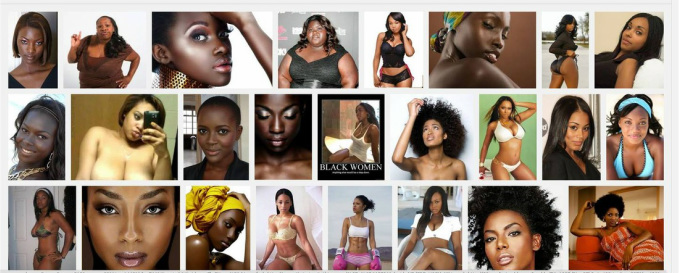


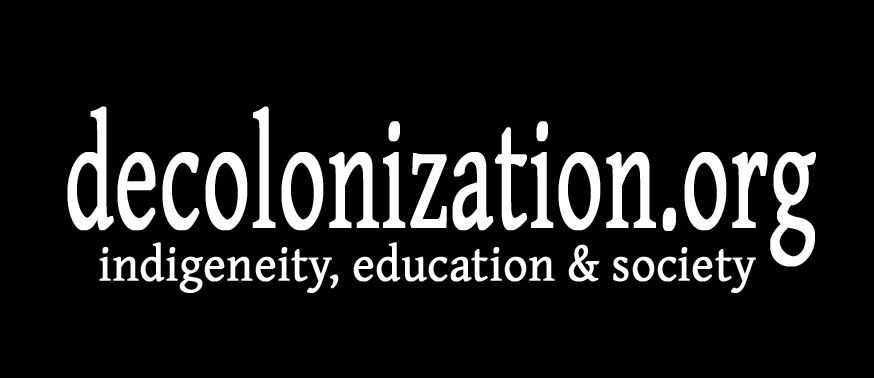


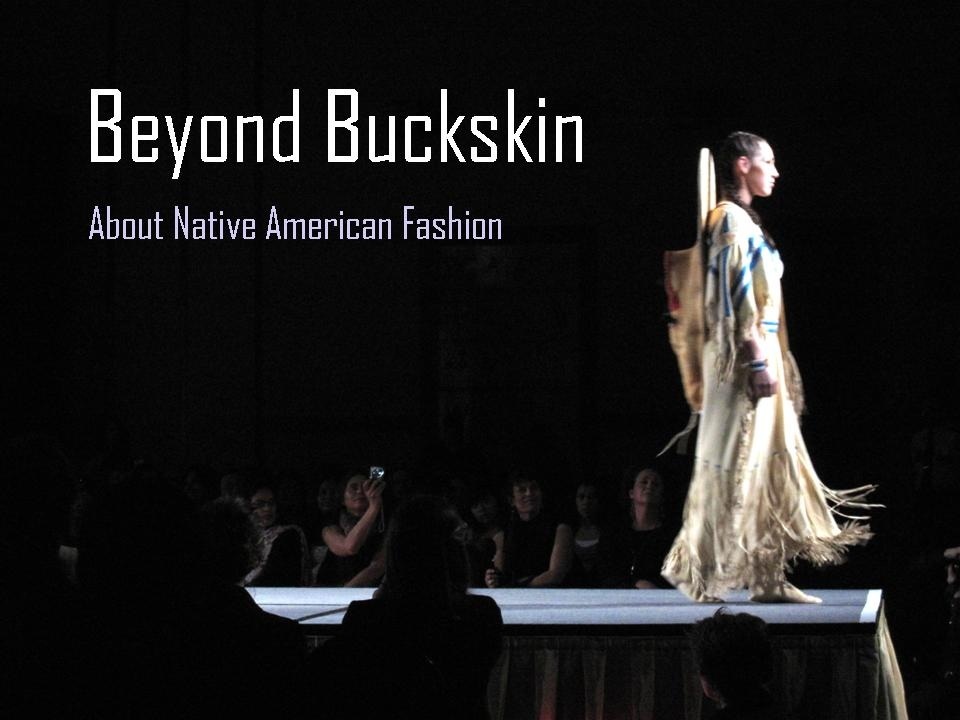

 RSS Feed
RSS Feed
